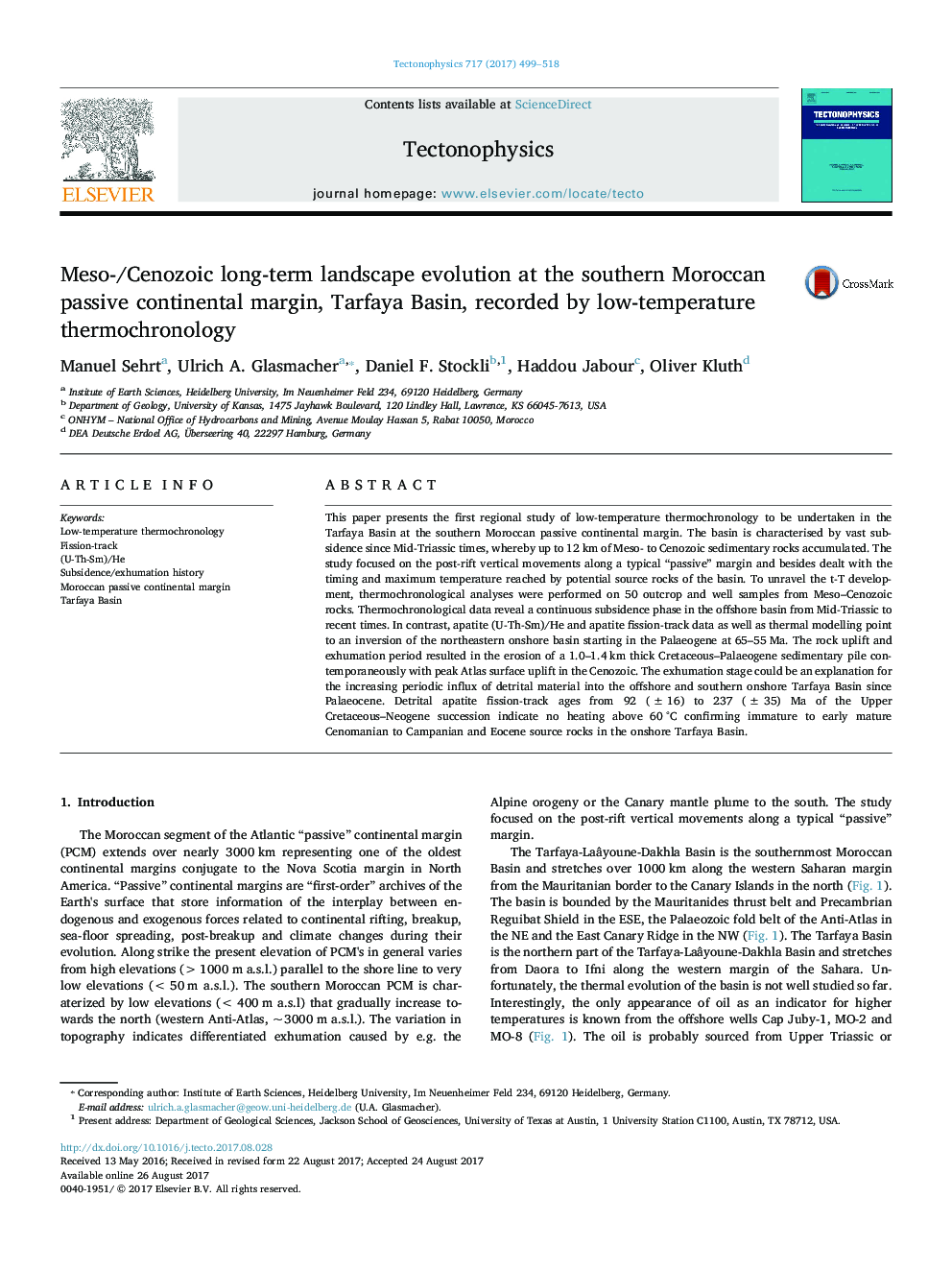| Article ID | Journal | Published Year | Pages | File Type |
|---|---|---|---|---|
| 5781489 | Tectonophysics | 2017 | 20 Pages |
Abstract
This paper presents the first regional study of low-temperature thermochronology to be undertaken in the Tarfaya Basin at the southern Moroccan passive continental margin. The basin is characterised by vast subsidence since Mid-Triassic times, whereby up to 12 km of Meso- to Cenozoic sedimentary rocks accumulated. The study focused on the post-rift vertical movements along a typical “passive” margin and besides dealt with the timing and maximum temperature reached by potential source rocks of the basin. To unravel the t-T development, thermochronological analyses were performed on 50 outcrop and well samples from Meso-Cenozoic rocks. Thermochronological data reveal a continuous subsidence phase in the offshore basin from Mid-Triassic to recent times. In contrast, apatite (U-Th-Sm)/He and apatite fission-track data as well as thermal modelling point to an inversion of the northeastern onshore basin starting in the Palaeogene at 65-55 Ma. The rock uplift and exhumation period resulted in the erosion of a 1.0-1.4 km thick Cretaceous-Palaeogene sedimentary pile contemporaneously with peak Atlas surface uplift in the Cenozoic. The exhumation stage could be an explanation for the increasing periodic influx of detrital material into the offshore and southern onshore Tarfaya Basin since Palaeocene. Detrital apatite fission-track ages from 92 (± 16) to 237 (± 35) Ma of the Upper Cretaceous-Neogene succession indicate no heating above 60 °C confirming immature to early mature Cenomanian to Campanian and Eocene source rocks in the onshore Tarfaya Basin.
Related Topics
Physical Sciences and Engineering
Earth and Planetary Sciences
Earth-Surface Processes
Authors
Manuel Sehrt, Ulrich A. Glasmacher, Daniel F. Stockli, Haddou Jabour, Oliver Kluth,
